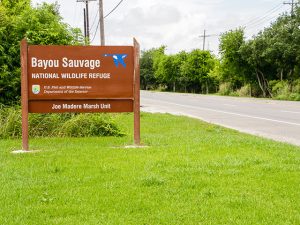The Bayou Sauvage Wildlife Refuge is on the Eastern side of New Orleans. Not only is it home to many different types of wildlife, which I will talk about more below, but it is also home to many different habitats. Combined, this allows for a natural storm surge protection to be developed within the levees. The refuge is over 24,000 acres and was established in 1990. Like so many other national parks, the people who live in, or visit, New Orleans drive through Bayou Sauvage every day and don’t realize it. This is because they are typically driving along I-10 and don’t have the ability to see more than the edges of the marshes surrounding them. What they will see while driving along though are some of the over 340 different species of birds that occupy the refuge.
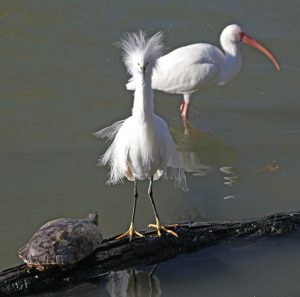
Snowy Egrets
In the marshes, visitors might be able to see some White Egrets or Blue Herons wading or resting.
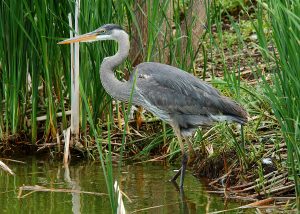
Great Blue Heron
Those that are exploring the refuge may come across some snakes or American Alligators. A warning is given about the snakes, “Beware, though; many are poisonous water moccasins. Observe them only from a safe distance.” As for the alligators, if visitors don’t have the opportunity to actually see one then they may hear the bellows of the males in search of a mate.
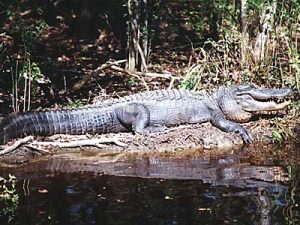
Along with the vast amount of wildlife in the refuge there are also many different habitats. There are areas of brackish or salt water, freshwater lagoons and ponds, marshes, and coastal hardwood forests.
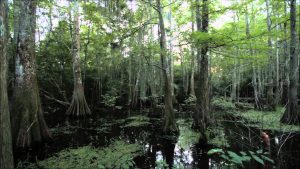
hardwood forest
These hardwood forests are one of the main storm surge protectants.
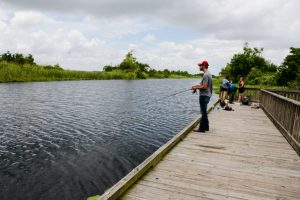
The freshwater areas offer a variety of edible fish.
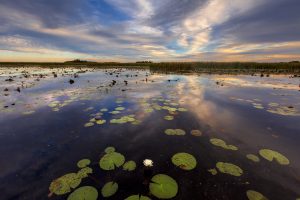
For more information on this beautiful refuge you can visit here.

